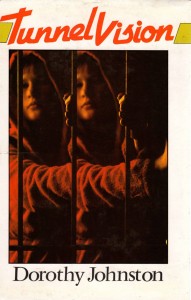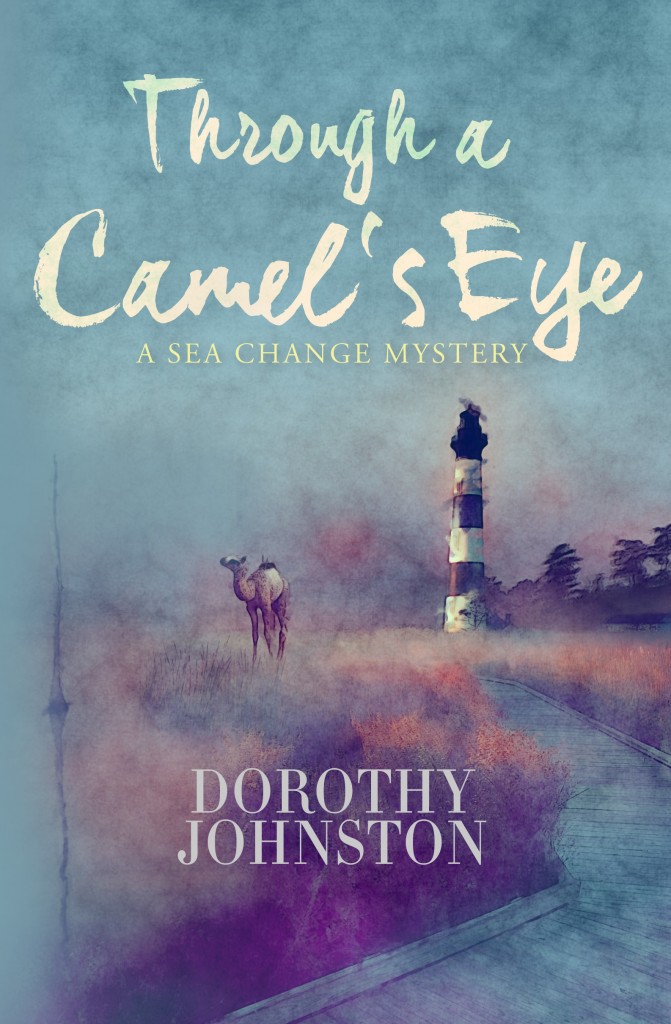A few weeks ago I was contacted by Brigid Magner, a lecturer at RMIT who described her current project about literary commemorations in Australia. This project includes several houses where Henry Handel Richardson (Ethel, or Ettie as she was called when she was a young girl) once lived.
The two photographs at the start of this post are of 26 Mercer Street Queenscliff where the author lived in the late 1870s. The second is from a short play I wrote for history week 2016, and shows Ettie (played by Laura McMahon) reading on the veranda. The play took place in the garden, where the audience sat, and on the spacious veranda.
Talking to Brigid and thinking about her project got me wondering about literary pilgrimages and why people travel long distances to visit the homes of their favourite authors.
At the start of Flaubert’s Parrot, author Julian Barnes has his narrator ask, ‘Why does the writing make us chase the writer? Why can’t we leave well alone? Why aren’t the books enough?’
I sometimes fantasise about visiting Shrewsbury in England, where Ellis Peters set her Cadfael series. Cadfael is a Benedictine monk who lived at the Abbey of St Peter and St Paul in the 12th century. I imagine the cobbled streets and tiny, close-packed houses. And there would be some corners of the city where my imagination wouldn’t feel let down. But mostly I would have to go about in blinkers. And this is one problem, isn’t it, for literary pilgrims, that places where well-loved authors and characters have lived exist so vividly in our imaginations that we must be letting something go when we travel, perhaps thousands of kilometres, to see them with our own eyes.
One of my favourite pilgrimage stories concerns Mikhail Bulgakov’s The Master and Margarita, a novel combining a wonderful mixture of naturalistic and allegorical writing, in which the devil visits Moscow. There is supposed to be a tour where the tour guide takes visitors to see the bench the devil sat on. Now I don’t know whether or not this story is true; it’s simply one of many legends surrounding a famous work of literature. And I don’t care if it’s true, though if I were seriously considering paying for a tour I suppose I would like to find out. I love the story because it’s a mixture of imagination, humour, and the desire to connect with works of fiction that have moved and changed us.
I do not have to go far to visit one of the childhood homes of Henry Handel Richardson.
I can’t get inside 26 Mercer Street since the house is privately owned and not open to the public. I did go inside once, as a special favour, and was disappointed by the modern renovations. The front garden, though, is recognisably what it would have been in the 1870s, when the Richardson family lived there for about eighteen months. Such a short time, at least from an adult perspective. So much happened!
My script for the play features Ettie and her younger sister, Lil, left alone in the house to mind their father, while their mother, Mary, was learning book-keeping and Morse code at the post office. Mary had been told that if she could complete her training in six months she’d be given a job as a postmistress. She had to do something to support herself and the girls since Walter was incapable of doing so.
When the Richardsons arrived in Queenscliff, Walter was still talking about working as a quarantine officer and developing a private medical practice, but it quickly became apparent that he could do neither. Those eighteen months witnessed the rapid decline that ended with him being committed to a Melbourne mental asylum.
From Mercer Street, Walter wandered off and got lost, fell into vociferous arguments with shop-keepers and people in the street, had to be fetched home by his elder daughter, then aged eight years old.
All of this made Ettie furious. She compensated by finding ways to live in her imagination.
I like to walk up and down Mercer Street, paying tribute silently, anonymously. I’m not sure what kind of tribute I’m paying exactly, but that doesn’t matter. The house has always seemed to me a heart of darkness. Even on sunny days it seems surrounded by a cloud of dread. But then there’s Mary’s practical good sense and determination, Mary hurrying home in the dusk, a little figure dressed in black, not knowing what chaos she would find there, but persevering anyway, day by day. And there are the two girls, Ettie bouncing a ball repeatedly, doggedly, against a blind wall of the house – so the legend goes – while she made up stories that took her as far away as possible from Queenscliff.
And my heart goes out to them. It doesn’t matter how often I trudge past, the feeling is the same. Childhood homes are like that, mostly, though a lucky few escape – compounds of misery and hope and desperate fantasies. It’s just that this small girl, whose presence I feel so strongly, went on to become Henry Handel Richardson, and wrote about her family, and created a masterpiece.
I’m proud to say that I’ve been chosen as one of the judges for this year’s Barbara Jefferis Award.
The following information is copied from the Australian Society of Authors website.
‘Barbara Jefferis was a feminist, a founding member of the Australian Society of Authors, its first woman President and, in the words of Thomas Keneally, ‘a rare being amongst authors, being both a fine writer but also organisationally gifted. She was a professional and internationally published writer long before most of us dreamed of such things.
The Award is paid from the Barbara Jefferis Literary Fund, which has been established as a result of a bequest from Barbara Jefferis’s husband, ABC film critic John Hinde, who died in 2006. The Australian Society of Authors is Trustee of the Fund. In 2014 the Award is valued at $50,000.’
And this year ebooks can be submitted, for the second time – the first was in 2012. For the first time, self-published books can also be submitted, subject to conditions detailed in the submission guidelines. As a judge and as an author, I applaud these developments.
The ASA offers its members the chance to publish their own ebooks under Authors Unlimited, and is very supportive, in other practical ways, of Australian writers attempting to understand and navigate the digital revolution.
Most of the time I feel energised and excited by the new possibilities and opportunities. Ebooks have given me, and countless others like me – some formerly published in print and some not – a way to think of the future and an expanded horizon.
I can’t help recalling Miranda, watching the strange, exotic ship on her horizon.
‘O wonder!
How many goodly creatures are there here!
How beauteous mankind is! O brave new world,
That has such people in’t.’
These lines from Shakespeare’s The Tempest are ironic, according to some interpretations, and Aldous Huxley’s Brave New World, published in 1931, famously turns irony into satire. It’s easy to satirise and deride ebook authors and their hopes of setting sail, but I prefer to look on the bright side.
This post is a follow-on from my last one, in that I’m writing it out of a resurgence of memories regarding literary Canberra. A nice bit of serendipity over the weekend has resulted in my website going live at the same time as James Ley’s review of ‘Republics of Letters: Literary Communities in Australia’, edited by Peter Kirkpatrick and Robert Dixon, was published in The Australian. It’s a thoughtful review, engaging with the book’s arguments about literary communities and the fraught nature of the term, and including a wide range of examples.

And it’s taken me back to D’Arcy Randall’s chapter on 7 Writers.
D’Arcy begins by remarking how, in ‘the 1970s, Australia’s thriving literary scene was typically associated with networks of male writers in such urban bohemian venues as Balmain in Sydney and Carlton in Melbourne.’
And how well I remember that! I was trying to be a writer in Carlton in the ‘70s and it was very important to drink in the right pubs, and to look the part. When my journalist partner was offered a job in the Press Gallery, instead of moving to Canberra with him, I decided on a foolish geographical compromise called Sydney. Then, after ten months on the highway – I was often too poor to afford the train fare and I’m lucky I didn’t end up buried in the Belanglo State forest – I gave in and settled in Canberra.
The relief was enormous. Here was a small, feisty literary community – and yes, I use the term ‘community’ aware that contains many kinds of ambivalence – where it didn’t matter what pub you drank in, or if you drank in any pub at all.
D’Arcy has been painstaking in gathering information about our writers’ group – where we met, how often, what we did, how many books we published between us. How torn we often were!
Of course, we’re still publishing, but 7 Writers ended its collective life in the late 1990s, and with, its end, the centrifugal pull, the push outwards, the ongoing battle between solitary creative compulsion and the possibility of actually sharing flowed away.
I’ve always liked Edith Wharton’s description of how writers view their work, indeed are forced to view their work, from the back of the tapestry. They can’t walk around the front and look at it; this is an impossibility. Well, writers’ groups are like that too, I’m discovering. It’s a strange, unsettling, delightful experience to have something you participated in, were intimate with, for almost twenty years, presented from the right side of the tapestry, but without the presentation glossing over or hiding the knots. Thank you, D’Arcy!
And ‘Republics of Letters’ contains other treats as well, including a chapter on my favourite Australian writer, Christina Stead and her no-longer neglected masterpiece, The Man Who Loved Children.
* D’Arcy Randall was born and educated in the US, but during the 1980s she lived in Brisbane, where she was senior editor at the University of Queensland Press. She there worked with Marian Eldridge and Marion Halligan on their first books. After returning to the US, she founded the journal Borderlands: Texas Poetry Review and began a teaching career at the University of Texas at Austin.
















